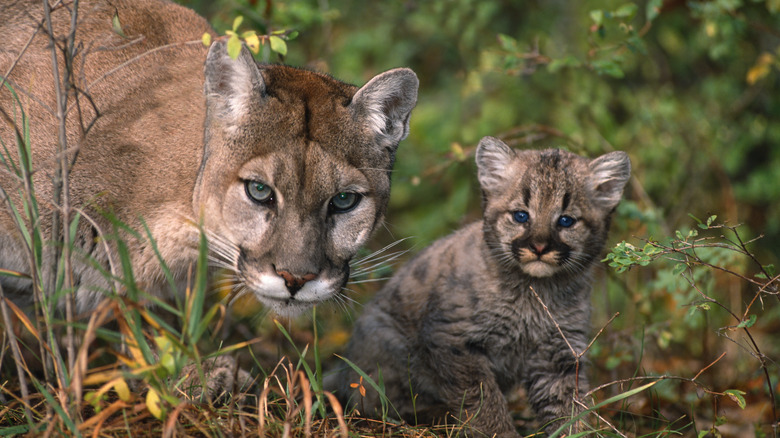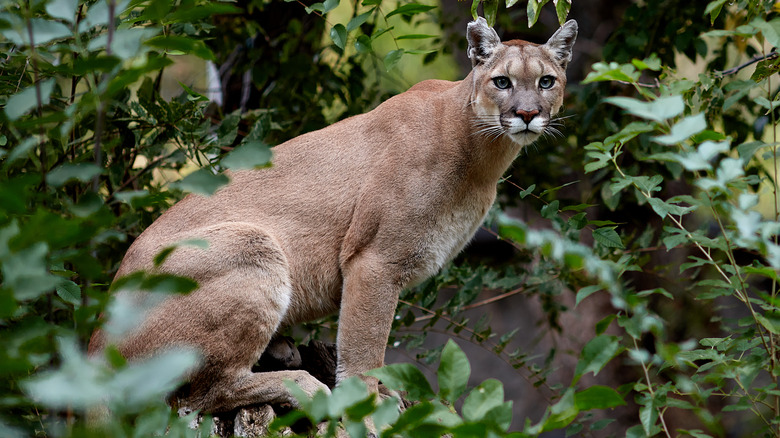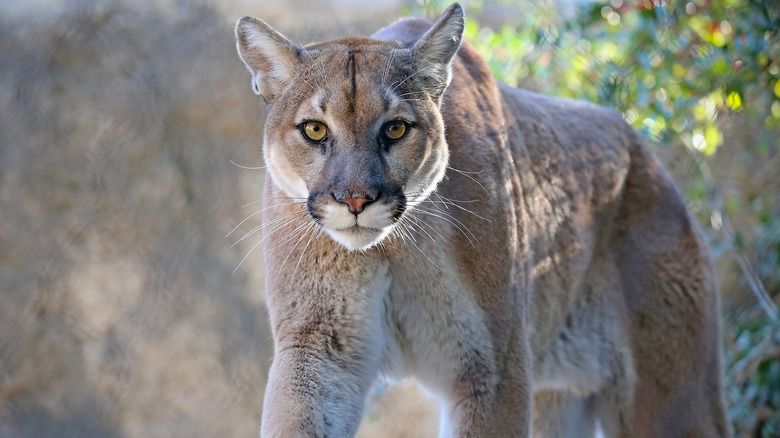Mountain lions go by many names. You may have heard them called pumas, cougars, catamounts, or panthers. No matter what the local population calls them, they deserve respect and precaution. These big cats can be found from Canada down to Chile, in 15 states in the American West, and in Florida. Though their habitat is shrinking because of human encroachment and dangers like traffic and hunting, they’re still likely to be found around human settlements and recreation areas. That means you may spot one (or be spotted by one) while hiking or camping.
Though mountain lions don’t generally wish to interact with humans, an attack can cause serious injury or death. It’s important to know what to do to avoid running into them in the first place while you’re out enjoying the wilderness, as well as what to do if you encounter one. These beautiful animals are an important part of the ecosystem, and it’s imperative to learn to live in the same environment in the safest way possible. Here are our tips to stay aware and what to do if you see a mountain lion or are attacked by one.
Avoid mountain lions in the first place

Mountain lions generally try to avoid human encounters. They tend to be loners, unless it’s mating or kitten season. In fact, they may be nearby, even if you don’t see them. You often find them near caves, rock groupings, forests, deserts, swamps, and grasslands. You may see them in larger parks like California’s popular Griffith Park, where they are tagged and tracked. When a recent one popular with the public, P-22, died, there was a sold-out memorial service. Still, that means that hundreds of people a day are in their territory.
While attacks are pretty rare – there have been only three fatal attacks and 19 nonfatal attacks in California between 1986 and 2022 – avoiding them is still your best bet. Here is how to keep yourself as safe as possible while sharing space with nature.
Avoid the times when they hunt, which are dawn and dusk. Don’t hike alone. Keep children nearby and pets closely leashed. Don’t hike quietly. Loud noises make it clear that you’re not a deer, which is a mountain lion’s main prey. Practice camping safety and don’t leave food out for you or your pets. Even if the lion doesn’t eat it, their prey might, which may attract them. Don’t set up camp near animal trails or overhangs. Avoid scratch marks, scat, and small piles of dirt, pine needles, grasses, or leaves. Wear bright and contrasting clothing, which distinguishes you from prey to their eyesight. If you see a dead animal, avoid it, as mountain lions often save and defend prey for weeks.
What to do if you see a mountain lion

If you see a mountain lion and it doesn’t see you, back away slowly and change course without turning your back. If they do see you, stop and make sure they have enough space and time to leave. Never approach a lion or cub. Do not crouch or bend over, even to pick up your children. That makes you look more like a deer and exposes your head and neck, which is what they attack. Unzip your jacket and pull it up over your head to appear bigger. Wave your arms around slowly, and speak loudly and slowly, or bang your water bottle. Throw stones if you have them in hand. Keep eye contact (as another predator would), and if you can pick up your child or pet without bending over, do so. Do not try to run away. In fact, running and biking may make them chase you. They can run up to almost 45 miles an hour, so you definitely can’t outrun them. If you see a kitten, assume mama is there as well and that she’ll defend her baby.
If you are attacked, fight back with anything you have, like a rock, a stick, hiking poles, or even your bare hands. Yell as loudly as you can, but do not try to run. That’s what their prey does. Remain facing them to avoid exposing your neck and head. Finally, if you spot one, even from far away, report it to the local park ranger or office. You can also read our tips for rattlesnake encounters here.

